Here in Northern California I am fortunate to have at least three of the western hummingbirds of North America visiting my yard. The least common species of hummingbird I see here is the Calliope Hummingbird (Stellula calliope)(click on photos for full sized images).
The smallest of the North American hummingbirds at just 3 1/4 inches, and with wings extending beyond its short tail, the Calliope Hummingbird is usually distinguishable from its larger counterparts by size alone. This is a photo of a male Calliope Hummingbird on the feeder next to the much larger male Anna’s Hummingbird.
Because of its shorter wing length, the Calliope also has faster wingbeats, making it sound more like a bumble bee. This also sets it apart from the larger hummers.
The male also has a unique gorget among North American hummingbirds. His iridescent gorget is divided into separate magenta-red rays, which can be elevated in an elegant star-burst display against the white background of his throat. This photo by Wally Rufous is the best photo I have ever seen of this phenomenon!
This beauty is the female Calliope Hummingbird, she looks similar to the female Rufous Hummingbird (Selasphorus rufus) but she has dark and pale spots in front of her eye and a weak pale line over the base of her bill. She is the latest of our local breeders, not nesting usually until mid-May.
The female Rufous Hummingbird has more rufous in her flanks and often has a few patchy orange-red feathers on her throat. She will begin breeding in April.
The male is the only hummingbird in North America with a rufous back.
He also sports a brilliant orange-red gorget.
Enjoy this close-up look at this guy preening.
The most common hummingbird seen in my neck of the woods is Anna’s Hummingbird (Calypte anna). The male is the only North American hummer with both a rose red crown and gorget.
The female is the earliest breeder of all these species, arriving on breeding grounds shortly after the males in November. Here you can see the female collecting nesting material.
The ability to take advantage of both nectar and insects allows Anna’s Hummingbirds to avoid competition from other hummingbirds by nesting in the winter. This is a photo of the female Anna’s Hummingbird in her nest.
The male Anna’s can be heard for quite a long way when performing his courtship display known as the “dive display” discussed in one of my previous posts.
If you haven’t seen a hover of hummingbirds around a feeder before, you may want to watch this video I filmed off my back porch. These little “jewels of the sky” are a blast to watch!

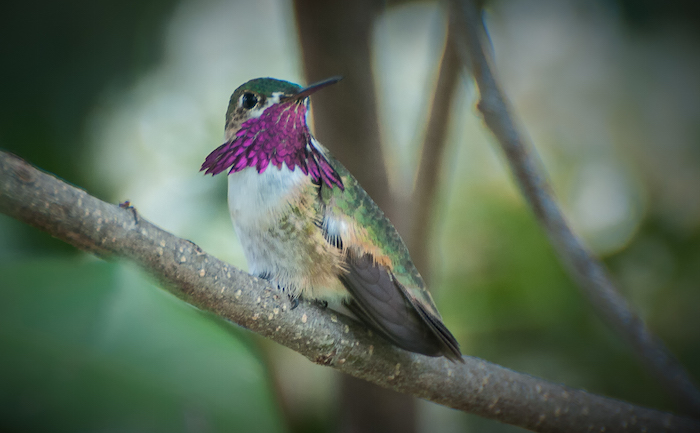
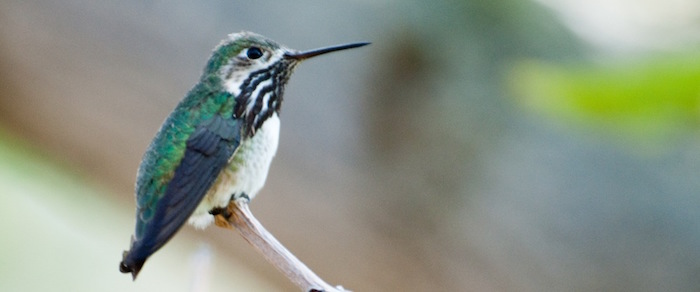
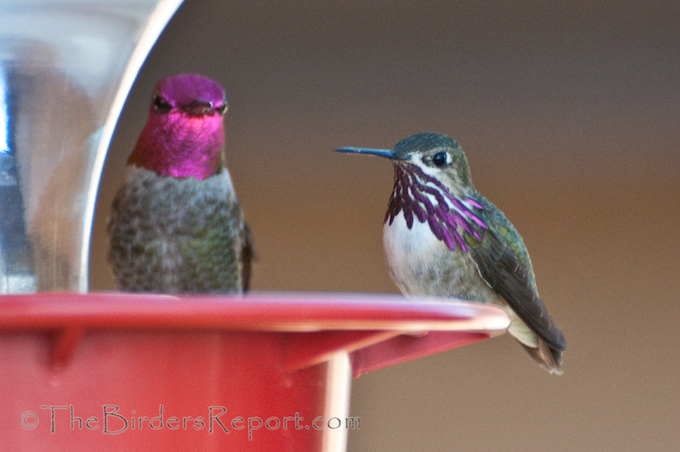
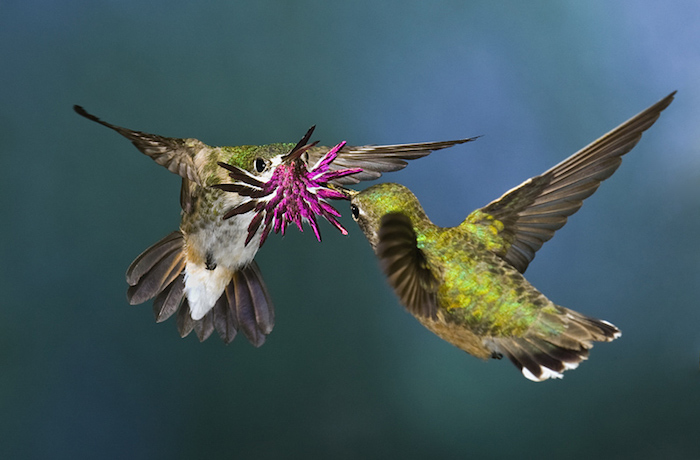
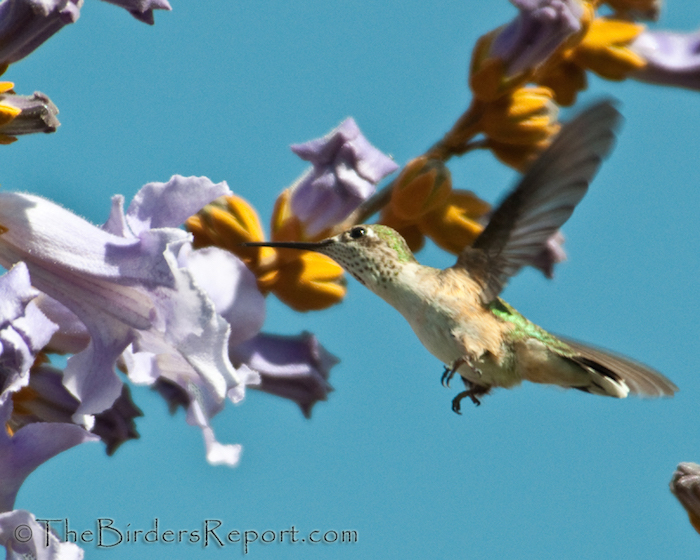
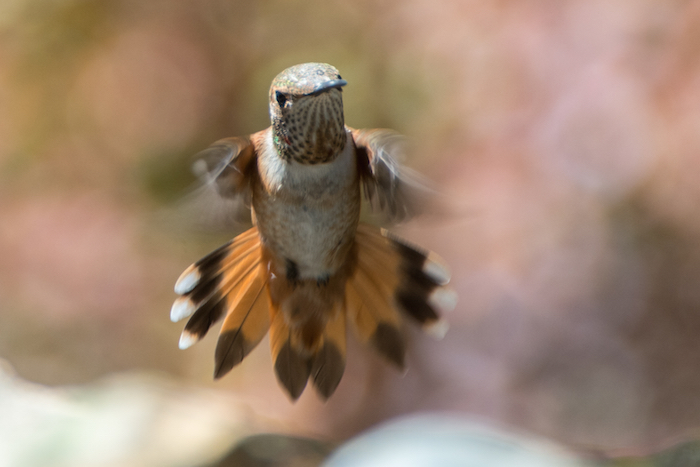
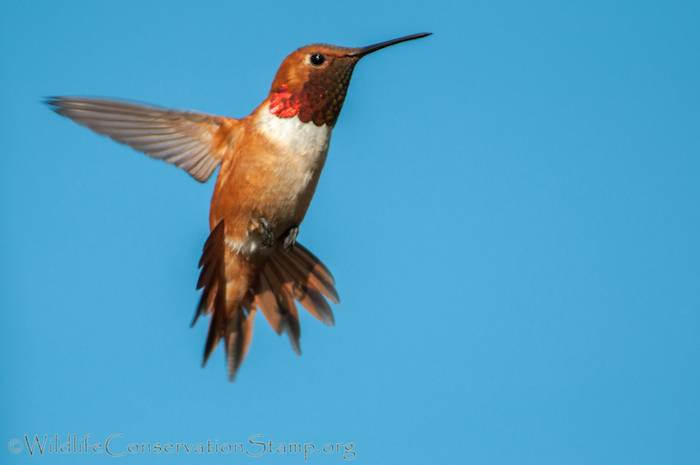
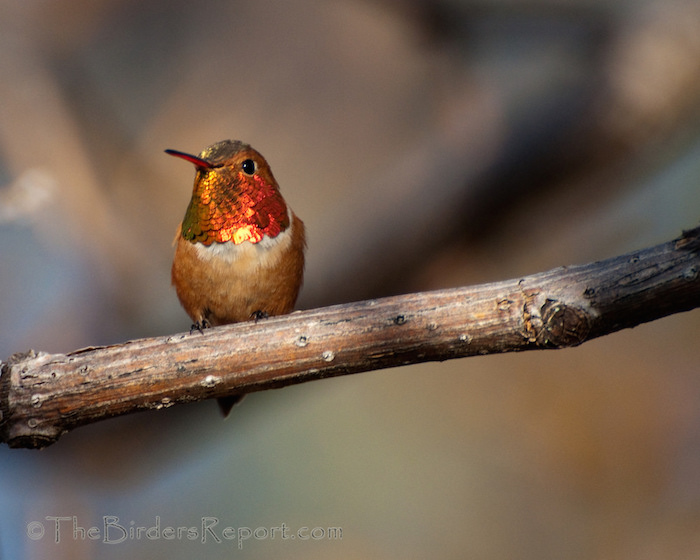
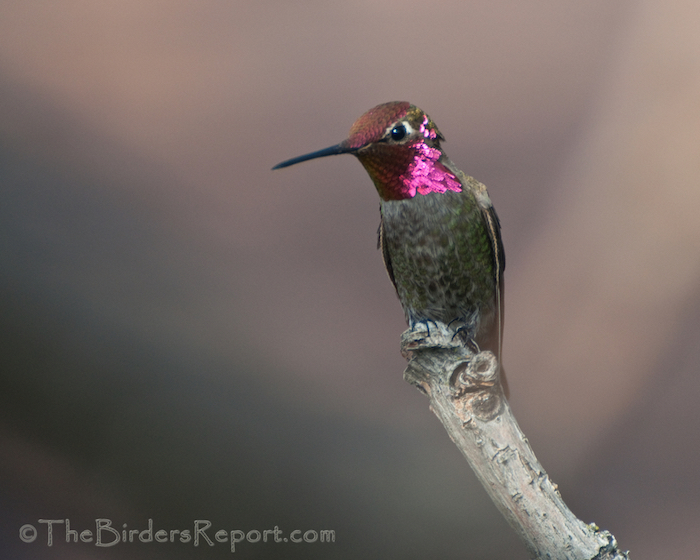
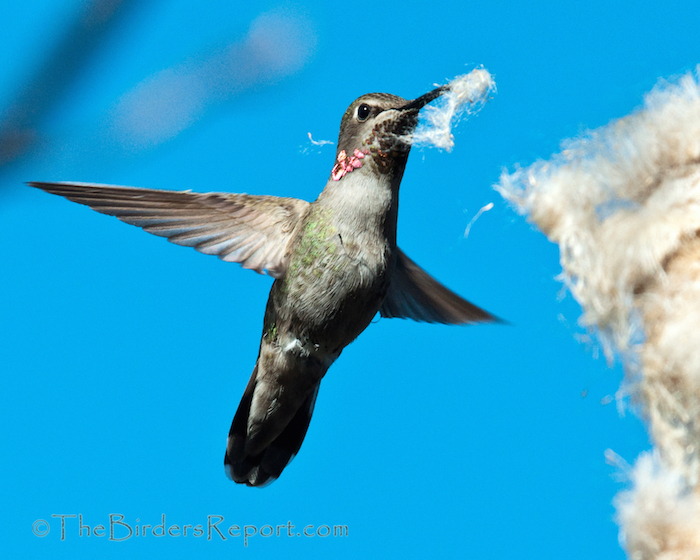
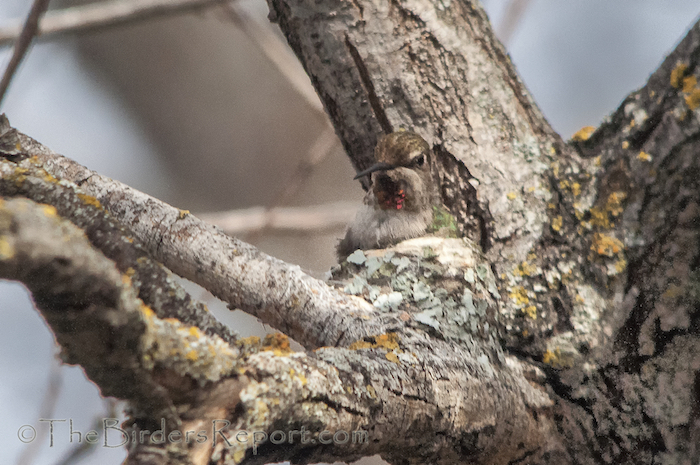
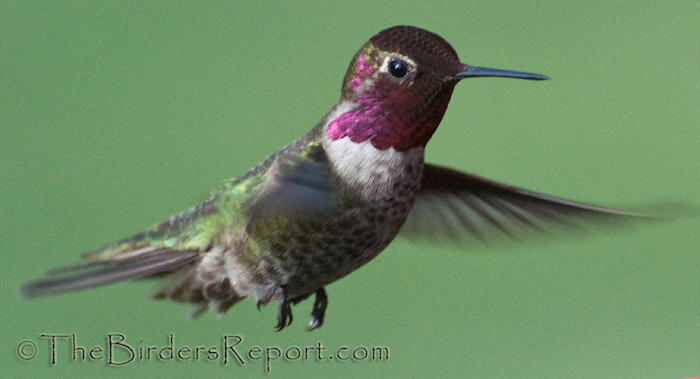
No comments yet.